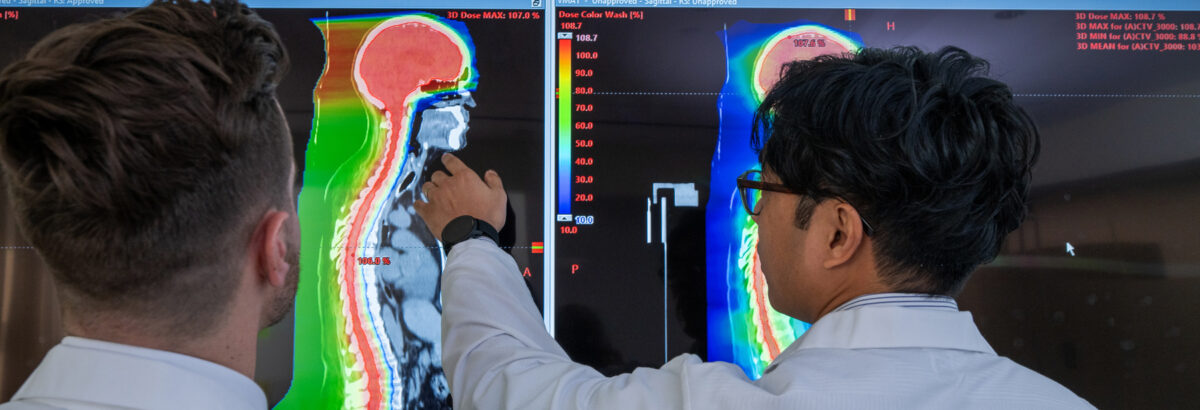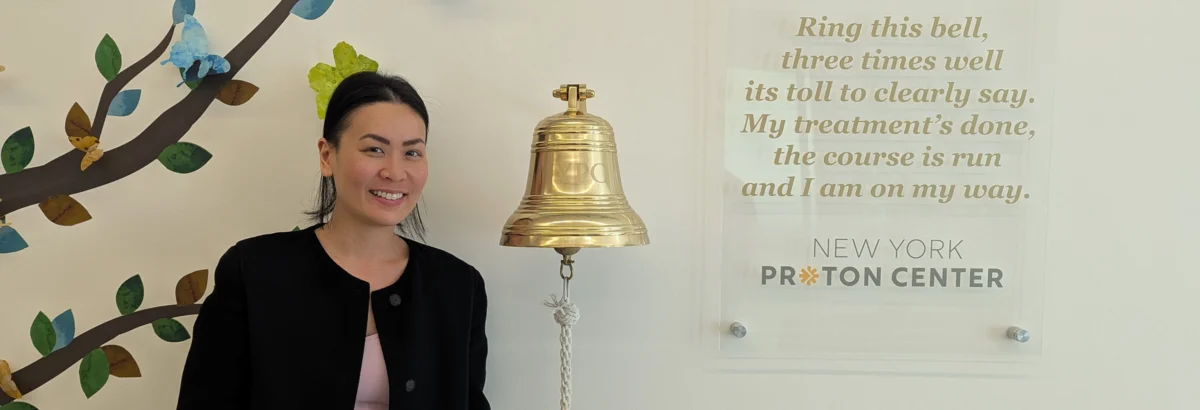Medical Dosimetrists: Making Precision Possible
When you are undergoing proton therapy, there is a whole team of experts supporting you—some you will meet face to face, and others work diligently behind the scenes. One of the most vital (yet often unseen) members of that team is the medical dosimetrist.
At the New York Proton Center (NYPC), our dosimetrists play a crucial role in planning your care. Working hand-in-hand with radiation oncologists and medical physicists, they design highly precise treatment plans that deliver radiation exactly where it is needed, targeting tumors while sparing healthy tissues and organs.
Precision Meets Compassion
The work of a dosimetrist is where science meets heart. It is a job that requires deep technical expertise and unwavering attention to detail, but also compassion and empathy.
At NYPC, our 12 dosimetrists create treatment plans for a wide range of adult and pediatric cancers. It is a responsibility that brings great personal reward. Two members of our Dosimetry team, Julie Moreau and Jehvaney Robinson, both Certified Medical Dosimetrists, shared what brought them to this field and why it means so much to them.
From X-Rays to Proton Plans: Jehvaney Robinson’s Journey
Jehvaney joined NYPC in 2023 after graduating from Thomas Jefferson University’s dosimetry program. But his journey in radiology began five years earlier, working as an X-ray and CT-scan technologist.
“I loved imaging, but I wanted a deeper connection with patients,” he explains. “With X-rays, you take the image and that is it—the patients return to the ER or their doctor. In dosimetry, you follow the patient’s story.”
Now, Jehvaney helps develop treatment plans and tracks patient progress over time. “You start to see the tumor shrink. You hear that they are feeling better. That means everything.”
Working with our pediatric patients has left a profound impact on him. “These children are just starting their lives. To help them heal—to watch them get better—that hits differently.”
From Astronomy to Oncology: Julie Moreau’s Path to Dosimetry
Julie had always been drawn to science and majored in physics and astronomy at Boston University. However, her career plans took a turn during her senior year, when she decided to pursue a different career direction. An opportunity to shadow a dosimetrist at Massachusetts General Hospital opened her eyes to a new path.
She enrolled in the first class of Suffolk University’s graduate dosimetry program, and after working in Massachusetts and Maryland in proton therapy, she joined NYPC in 2019 as a Senior Dosimetrist. Now, she helps lead patients’ treatment planning from the very beginning.
The process begins with a CT simulation, where Julie and her colleagues work with the radiation therapy team to position patients for treatment. Then comes contouring, a highly detailed process of mapping out the tumor and nearby organs to protect. Next comes treatment plan optimization. The proton treatment plan is created by using a very specialized computer system in partnership with physicians and physicists. During this process, the team will determine how much radiation will be delivered to the tumor and how to position and optimize the proton beam to maximize normal organ sparing. “Every patient is assigned a dosimetrist,” Julie says. “We collaborate with physicians, medical physicists, and radiation therapists to ensure every proton treatment is as safe and effective as possible.”
Behind the Scenes—but Never Out of Sight
While you may not see a dosimetrist every day, their impact on your treatment is immense. From crafting your radiation plan to protecting your quality of life, they are vital players on your care team.
For Jehvaney, Julie, and the entire dosimetry team, the reward lies in the teamwork—and the transformation. Jehvaney said, “You are part of something bigger than yourself. We are all working toward the same goal: helping patients and their families through some of the hardest days of their lives.”
At NYPC, our dosimetrists are more than planners—they are partners in your healing.



